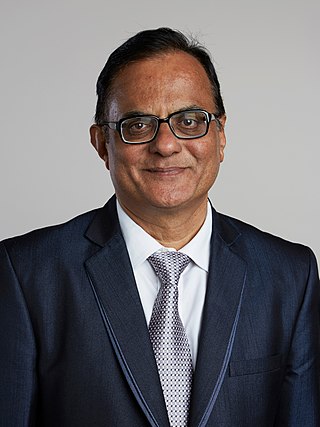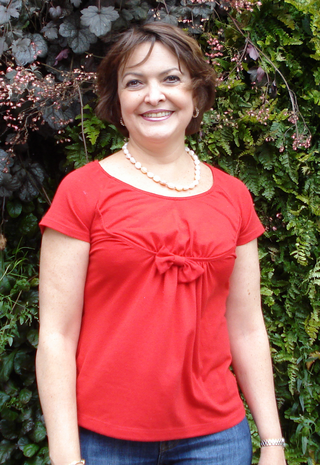
Nanotechnology, often shortened to nanotech, is the use of matter on atomic, molecular, and supramolecular scales for industrial purposes. The earliest, widespread description of nanotechnology referred to the particular technological goal of precisely manipulating atoms and molecules for fabrication of macroscale products, also now referred to as molecular nanotechnology. A more generalized description of nanotechnology was subsequently established by the National Nanotechnology Initiative, which defined nanotechnology as the manipulation of matter with at least one dimension sized from 1 to 100 nanometers (nm). This definition reflects the fact that quantum mechanical effects are important at this quantum-realm scale, and so the definition shifted from a particular technological goal to a research category inclusive of all types of research and technologies that deal with the special properties of matter which occur below the given size threshold. It is therefore common to see the plural form "nanotechnologies" as well as "nanoscale technologies" to refer to the broad range of research and applications whose common trait is size.

In academic publishing, a scientific journal is a periodical publication intended to further the progress of science, usually by sharing findings from research with readers. They are normally specialized based on discipline, with authors picking which one they send their manuscripts to.

Elsevier is a Dutch academic publishing company specializing in scientific, technical, and medical content. Its products include journals such as The Lancet, Cell, the ScienceDirect collection of electronic journals, Trends, the Current Opinion series, the online citation database Scopus, the SciVal tool for measuring research performance, the ClinicalKey search engine for clinicians, and the ClinicalPath evidence-based cancer care service. Elsevier's products and services include digital tools for data management, instruction, research analytics, and assessment.

Nanoid robotics, or for short, nanorobotics or nanobotics, is an emerging technology field creating machines or robots whose components are at or near the scale of a nanometer. More specifically, nanorobotics refers to the nanotechnology engineering discipline of designing and building nanorobots with devices ranging in size from 0.1 to 10 micrometres and constructed of nanoscale or molecular components. The terms nanobot, nanoid, nanite, nanomachine and nanomite have also been used to describe such devices currently under research and development.

Materials Today is a monthly peer-reviewed scientific journal, website, and journal family. The parent journal was established in 1998 and covers all aspects of materials science. It is published by Elsevier and the editors-in-chief are Jun Lou and Gleb Yushin. The journal principally publishes invited review articles, but other formats are also included, such as primary research articles, news items, commentaries, and opinion pieces on subjects of interest to the field. The website publishes news, educational webinars, podcasts, and blogs, as well as a jobs and events board. According to the Journal Citation Reports, the journal has a 2020 impact factor of 31.041.
Environmental Science: Processes & Impacts is a monthly peer-reviewed scientific journal covering all aspects of environmental science. It is published by the Royal Society of Chemistry and Kris McNeill is the editor-in-chief. The journal was established in 1999 as the Journal of Environmental Monitoring and obtained its current title in 2013.

The Korea University of Science and Technology (UST) is a group of public research institutions in Seoul, Suwon, Changwon, Ansan, Seongnam and Daejeon, in South Korea. UST is the leading government-funded research university dedicated to the synergistic effects of research and education in Science and Technology. The UST was established in 2003 by the Ministry of Science, ICT and Future Planning as the nation’s graduate school specializing in science and engineering education and research. The UST runs only a graduate school. Creating the new driving force for growth would play a major role in leading national growth in the new century. The South Korean government established the UST to produce professionals in the field of combined technologies, thought of as one of the most important criteria for creating the driving force for South Korea's national growth. Today, UST continues to develop itself into a major research university.

Surface plasmons (SPs) are coherent delocalized electron oscillations that exist at the interface between any two materials where the real part of the dielectric function changes sign across the interface. SPs have lower energy than bulk plasmons which quantise the longitudinal electron oscillations about positive ion cores within the bulk of an electron gas.
The American Society of Hematology (ASH) is a professional organization representing hematologists, founded in 1958. Its annual meeting is held in December of every year and has attracted more than 30,000 attendees. The society publishes the medical journal Blood, the most cited peer-reviewed publication in the field, and Blood Advances, an online, peer-reviewed open-access journal.
A nanofluid is a fluid containing nanometer-sized particles, called nanoparticles. These fluids are engineered colloidal suspensions of nanoparticles in a base fluid. The nanoparticles used in nanofluids are typically made of metals, oxides, carbides, or carbon nanotubes. Common base fluids include water, ethylene glycol and oil.
Photonics and Nanostructures: Fundamentals and Applications is a peer-reviewed scientific journal, published quarterly by Elsevier. The editors-in-chief are A. Di Falco University of St Andrews, M. Lapine University of Technology Sydney, P. Tassin Chalmers University of Technology, M. Vanwolleghem Centre National de la Recherche Scientifique (CNRS), Villeneuve-d'Ascq, L. O'Faolain Cork Institute of Technology.

Younan Xia is a Chinese-American chemist, materials scientist, and bioengineer. He is the Brock Family Chair and Georgia Research Alliance (GRA) Eminent Scholar in Nanomedicine in the Wallace H. Coulter Department of Biomedical Engineering, with joint appointments in the School of Chemistry & Biochemistry, the School of Chemical & Biomolecular Engineering, and Parker H. Petit Institute for Bioengineering & Bioscience at the Georgia Institute of Technology.

Ajay Kumar Sood is an Indian physicist and researcher currently serving as the 4th Principal Scientific Adviser to the Government of India.
Jackie Yi-Ru Ying is an American nanotechnology scientist based in Singapore. She is the founding executive director of the Institute of Bioengineering and Nanotechnology (IBN).
Progress in Aerospace Sciences is a monthly peer-reviewed scientific journal covering all areas of aerospace and aerospace engineering. It covers all areas of aerospace and aerospace engineering, particularly with respect to new theoretical and experimental developments and their applications in research, industry, and university. The journal aims to serve as a general-purpose aerospace journal, condensing the ever-expanding, increasingly multidisciplinary field of aerospace into one publication. The journal is intended for a broad readership - generally anyone either active or simply interested in the aerospace field. The editors-in-chief are K.J. Badcock and M.F. Platzer. It was established in 1961 and is published by Elsevier. Originally the journal published articles written in English, French, and German, but since 1972 it has been published entirely in English.
The EU NanoSafety Cluster (NSC) is a cluster of European Commission-funded projects in the funding programs FP6 (2002–2006), FP7 (2007–2013), and Horizon 2020 aka H2020 (2014–2020) and Horizon Europe framework programmes, aimed at harmonizing the research done in these projects. The cluster coordinates work done by the NanoSafety Cluster projects to study and establish the safety of nanomaterials. The coordination by the cluster is organized in half-yearly meetings and various working groups. An example of a result of the NanoSafety Cluster's harmonization was the prioritization of which nanomaterials to study. The NSC has become a reference actor for consumers' associations in the field.
Kourosh Kalantar-zadeh is an Australian scientist involved in research in the fields of materials sciences, electronics, and transducers. He is best known for his works on two-dimensional semiconductors, ingestible sensors and liquid metals. He led his group to the invention of an ingestible chemical sensor: human gas sensing capsule.

Tessy María López Goerne is a Mexican solid-state chemist, professor, researcher, academic, and popular science communicator. She has specialized in the fields of nanotechnology and nanomedicine, as well as being a pioneer in catalytic nanomedicine. She directs the Nanotechnology and Nanomedicine Laboratories at the Universidad Autónoma Metropolitana Xochimilco (UAM-X) plant and the National Institute of Neurology and Neurosurgery.
Nanoinformatics is the application of informatics to nanotechnology. It is an interdisciplinary field that develops methods and software tools for understanding nanomaterials, their properties, and their interactions with biological entities, and using that information more efficiently. It differs from cheminformatics in that nanomaterials usually involve nonuniform collections of particles that have distributions of physical properties that must be specified. The nanoinformatics infrastructure includes ontologies for nanomaterials, file formats, and data repositories.









